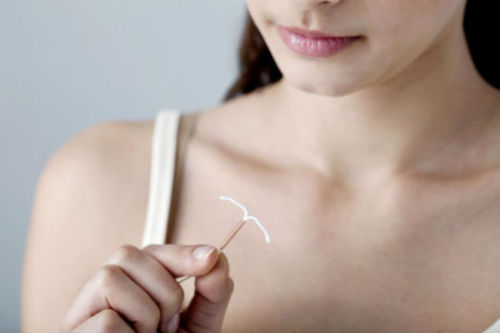IUDs are IN

Does it feel like all of your friends are getting IUDs? Well, maybe they are.
An IUD is a small, T-shaped contraceptive device implanted in the uterus. Though IUDs lie far behind more popular methods of birth control like the pill and condoms, the share of women using an IUD nearly doubled from 2006 to 2010. Uh-huh, uh-huh.
The Center for Disease Control estimates that over 11% of American women age 25 and 34 now use IUDs, and the number continues to grow.
So, why the recent spike?
The bad press is finally dying down
IUDs had promising beginnings as a long-lasting form of birth control when they emerged in the 60s. Then, in 1973, a brand of IUDs called the Dalkon Shield injured as many as 200,000 women. There was a flaw in the Dalkon Shield design, which caused infections, septic miscarriages, and even death for some. Not. Good. At all. These IUDs were taken off the market as soon as the flaw was realized, but the damage was done. And the stigma around IUDs was born.
IUD stigma persisted among patients and health professionals thereafter. But recently, a slew of peer-reviewed studies have vouched for the safety of the IUD (which has been totally reengineered since that disaster in ‘73, by the way). The American College of Obstetricians and Gynecologists (ACOG) and other respected organizations have also come to rally behind it, slowly reversing popular opinion. Other countries are leading the way. IUDs account for 27% of female contraception use in Norway, and they are pretty widely used throughout Europe.
It’s incredibly reliable
As many as half the pregnancies in the United States are unintended, and 95 percent of those unintended pregnancies result from not using or misusing birth control: a condom breaks, a birth control pill is forgotten, etc. Meanwhile, IUDs are more than 99% effective, with little to no hassle once inserted.
It lasts forever
Okay not forever, but once implanted, IUDs do last for 3, 5 and even 10 years, depending on type and brand. That makes birth control just one less thing for busy women to worry about.
Reduced cost
In the past, the insertion of an IUD could have cost upwards of $1000. However, the Affordable Care Act has made it a requirement that health insurance cover all types of birth control at no cost. Thanks, Obama. Even though some uncertainties surrounding the adoption of the Act remain, for many an IUD is now a completely cost-free option.
No hormones!
There are several different brands of IUDs on the market, including one that does not release hormones into a woman’s body. Women of the yoga-doing, clean-living, organic-eating variety (and other women, too!) appreciate the ability to use a reliable form of birth control that does not involve hormones.
What about you? How do you feel about IUDs?
Despite all the recent good press, negative attitudes about IUDs persist. In a recent Glow poll, we asked 20,000 women for their perception of IUDs. 46% responded, “They scare me.” Only 14% of respondents answered, “They are great!”
For those scared of IUDs, it could make sense to discuss your fears with your doctor–and your doctor might even be eager for the conversation. In 2011, ACOG adopted new guidelines encouraging physicians to discuss IUDs with patients. The American Academy of Pediatrics followed last year by endorsing IUDs as a first-line contraceptive option for teenage girls.
It’s true that inserting an IUD is a procedure like a pap smear, with possible discomfort initially and irregular spotting in the first few months. However, that could be a reasonable price to pay considering the long-lasting nature of this device, as well as the fact that you will not need to fear an unplanned pregnancy for a good long while. Wouldn’t that be an IUDream :)
